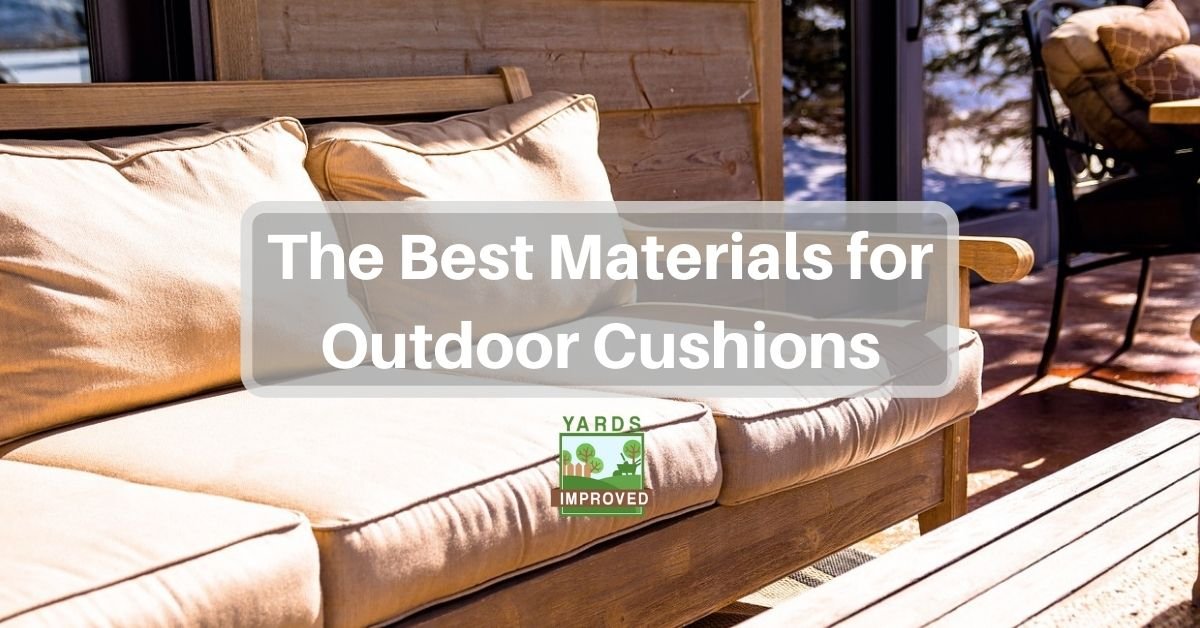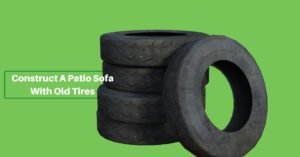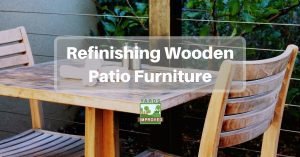Few things can beat sitting on the patio, a favorite drink in hand, enjoying the passing of time. But a big part of that comfort depends on what you’re sitting on. A great cushion on your chair and maybe a pillow or two behind your back make a huge difference in how much you can enjoy your outdoor space.
Of course, pillows and cushions can help your outdoor furniture look better, too. They can add a splash of color and improve the visual appeal of the area.
Of course, not just any padding and cover are suitable when it comes to outdoor use. So what are the things to look out for, and what materials do the trick?
What To Consider
Whether you’re buying your cushions and pillows or making them yourself, there are a few things to keep in mind. Ultimately, though, you need to look for a combination of comfort and suitability for outdoor use.
When it comes to comfort, the first factor to look at is the padding. Everyone has their preferences about how soft or firm a cushion should be, of course. At the same time, though, you want to choose a material that won’t lose its “bounce.” Try to choose a material that’s known for being able to retain its effectiveness over time.
Need more ideas for decorating your patio? You’ll love these!
The cover of your cushions should also be comfortable. Don’t forget that you’ll want to enjoy the furniture in hot weather. Avoid materials that might feel too hot to sit on. Also, look out for anything that will feel scratchy on your bare skin. Remember that you’ll likely be using this while wearing shorts, sleeveless dresses or shirts, or swimwear!
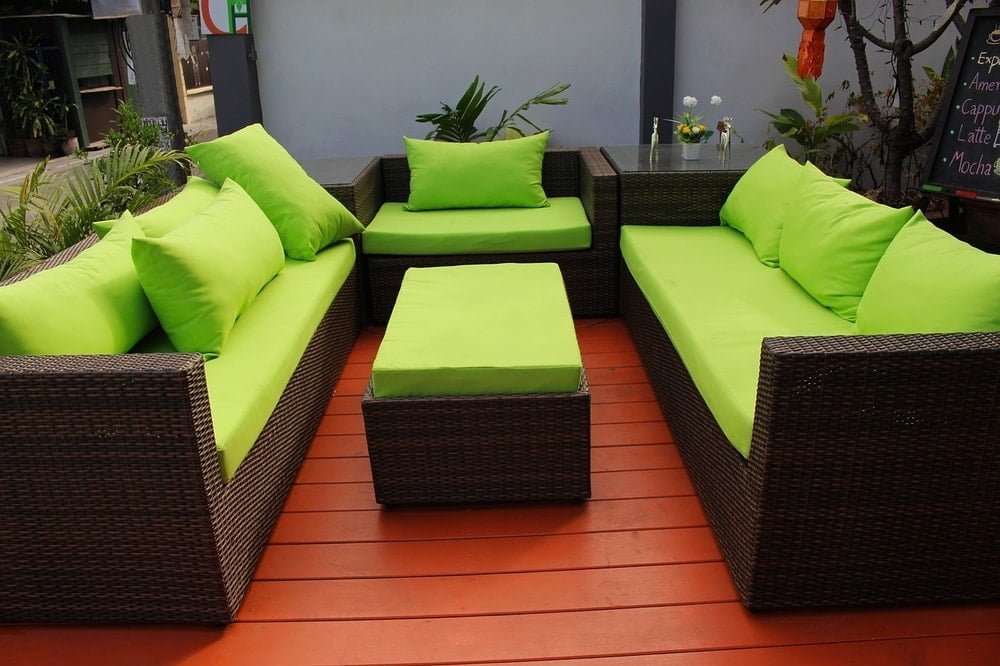
Your cushions – both their stuffing and their cover – also need to hold up to outdoor use. They should be resistant to both water and mildew. They also need to stand up to the light and heat of the sun without drying out or losing their color.
Durability is another key factor. Outdoor furniture often gets rougher treatment than their indoor counterparts. Mother Nature can contribute some rough treatment, too. Wind, heavy rains, falling leaves and branches, and changing temperatures all take a toll.
Trying to decide what frame material to choose for outdoor furniture? Check our guide!
Suitable Cover Materials For Outdoor Cushions
With all of this in mind, it’s obvious that not just any material will suit your needs for outdoor pillow and seat cushion covers. Here are some that will, however.
Cotton Canvas
We know that cotton breathes well. It’s also soft and comfortable. It can be dyed, so it’s available in a wide range of colors and patterns.
Cotton canvas can hold up over time but it does need care. It’s not water-resistant in itself, so it needs to be treated with a water-repellant substance at least once a year. It also fares poorly when exposed to chlorine, so it’s not practical near a swimming pool.
Duck cloth
Duck cloth is another type of canvas. The weave is tighter than regular cotton canvas. It’s commonly used for backpacks, duffel bags, and even in sneakers, so you know it’s durable.
It can sometimes feel a bit abrasive against the skin, especially when it’s brand new. However, it feels softer as its broken in.
Olefin (polypropylene)
Olefin was created in Italy in the late 1950s. Also known as polypropylene, it doesn’t absorb much water. It also dries quickly, making it useful for outdoor uses.
It’s durable. It’s resistant to sunlight and to stains. It also retains its colors well.
Olefin does melt at relatively low temperatures, so when you need to clean it, it’s best to let it air dry.
Solution-dyed acrylics
Solution-dyed acrylics are a manufactured material that stays cools and soft. These textiles may be best known under the brand name Sunbrella.
At the same time, it’s remarkably durable under sunlight. It can last as much as seven times as long as regular polyester under similar conditions.
Solution-dyed acrylics are usually associated with higher-end cushion covers.
Polyester coated with PVC (Texteline)
Polyester is probably the material on this list that we have the most contact with daily since it’s so common in clothing. It’s easy to dye or print, so you can find the color or pattern you’re looking for.
It’s pretty obvious, though, that polyester by itself won’t hold up to the wear-and-tear of use as a cushion cover. To make it more useful, it’s coated with a thin layer of PVC. This also makes it more water-resistant.
Remember, though, that PVC is a type of plastic. That can make it uncomfortable, especially against bare skin.
Vinyl
Vinyl is sometimes used as a cushion or pillow covering outdoors. It’s durable and water-resistant. However, it can be very uncomfortable, especially in the heat. This is the kind of material where you have to peel your skin from it on a hot day. Needless to say, we don’t recommend it.
Want something more relaxed than a chair? How about a hammock? They’re easy to hang!
Stuffing Options
Of course, the inside of your pillow or cushion is equally important. No outer material is completely waterproof, so the inner material also has to handle water well. It also has to support its daily use.
As with everything else, no material is perfect. But here are some of the more common ones that do reasonably well.
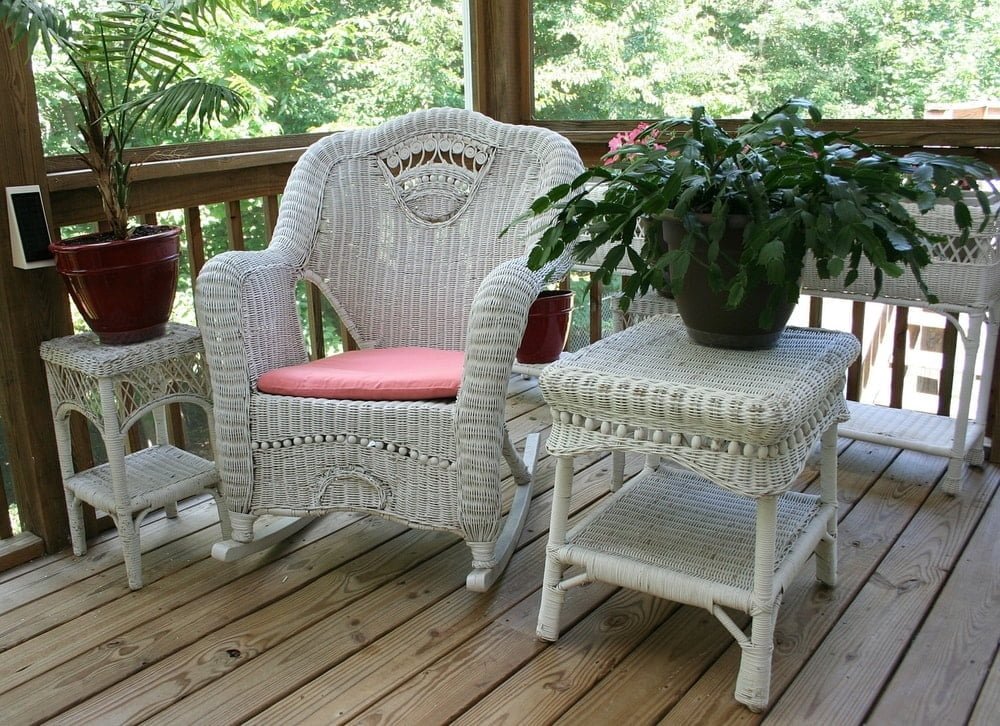
Foam
Open-cell foam has large pores that allow water to pass right through, which can be good for outdoor furniture. This is the type of foam used in air filters, for example. They don’t hold their form too well, though.
Closed-cell foam is denser. The advantage of this is that it holds its form longer, even though it will deform over time. However, it also absorbs water. It should be treated with a water-resistant spray and used inside a water-resistant cover. It can also benefit from an anti-bacterial treatment for protection when it does get wet.
Dacron
The brand name Dacron is associated with durable beds. But the same qualities that make it great there also mean it’s comfortable and durable for outdoor seat cushions and pillows.
It bounces back after use and will hold up for a longer period than other materials. By itself, it can be hard. So a thin layer of polyester is often placed on top for softness.
Dacron wrapped
Some cushions only have an outer layer of Dacron. That means they’re still subject to some crushing as the inner material gets compressed. These aren’t as good as cushions made entirely of Dacron; they might not even be as comfortable as a dense foam cushion.
Polyester Fill
Polyester fill can look fluffy and comfortable – and it may even feel that way the first couple times you use on it. However, it quickly gets pressed down and won’t bounce back.
The only time we’d recommend it is if the cushion or pillow will be purely for decorative use. That is, no one will ever sit on or against it.
Conclusion
To get the most out of your outdoor furniture, comfortable cushions and pillows are essential. Be sure to choose ones made of durable materials that are suited to the unique demands of Mother Nature, though. The right set can improve how your deck or patio looks and how much you enjoy sitting on it!

